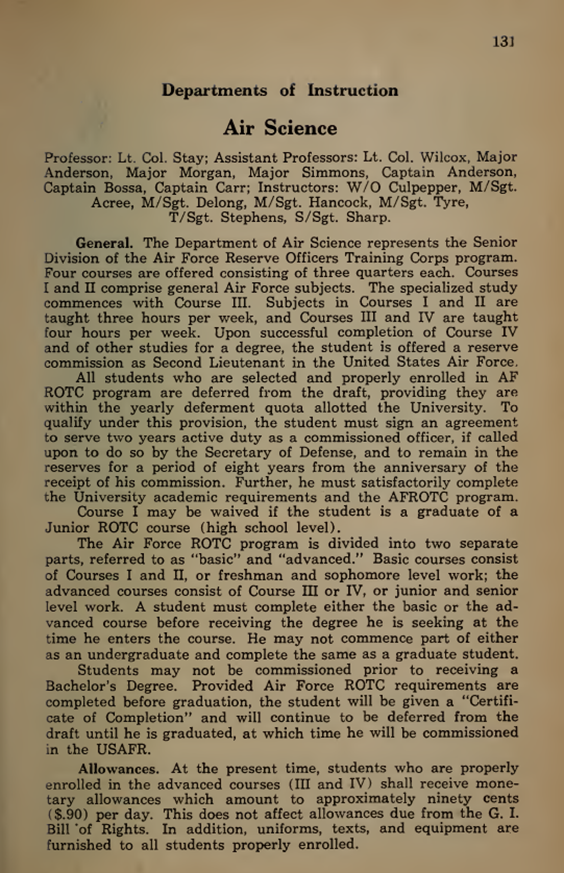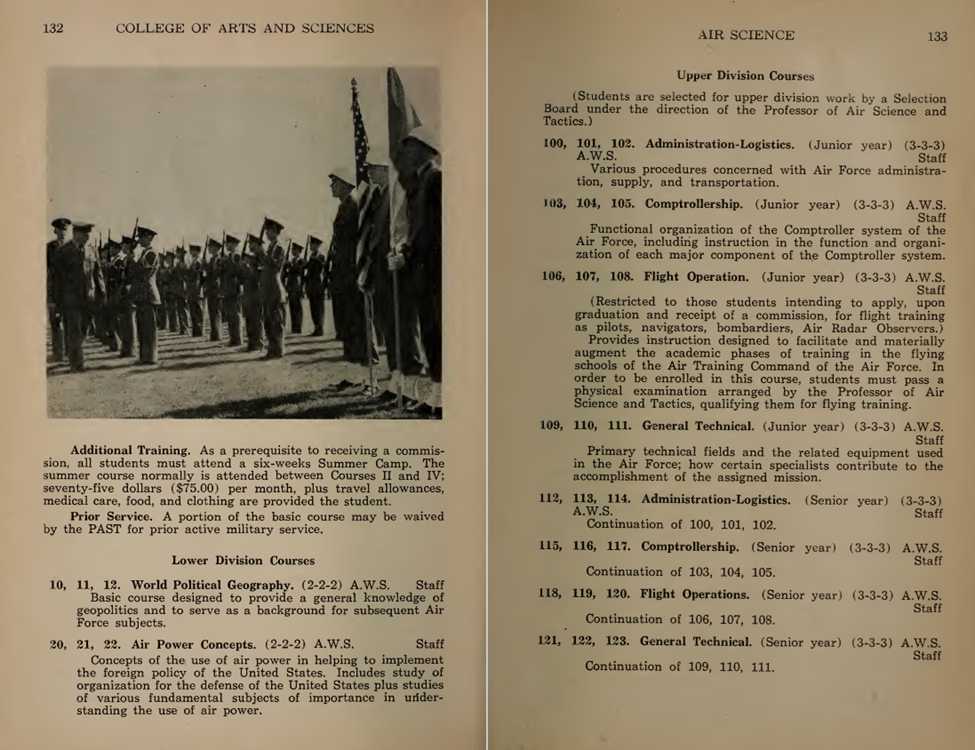BYU’s association with military service begins long before the establishment of ROTC units. In 1917, while war raged in Europe, BYU President Brimhall proposed the establishment of a military course on BYU campus in conjunction with the physical education classes. The suggestion was approved by President Joseph F. Smith, and with the influence of Senator Reed Smoot, accepted by the U.S. Army, making BYU campus an official camp of the Student Army Training Corps (SATC).

This photo shows the SATC soldiers standing at “port arms” on the steps of the Maeser Building in 1918. Only the men on the first row are in full uniform. The soldiers were paid standard enlistment pay of thirty dollars a month while attending school. The Maeser Building became a barracks, and women collected 300 mattresses and 900 quilts for the troops.
The AFROTC unit was established at BYU in April 1951 after President Ernest L. Wilkinson called a meeting of all male students and faculty members in the Joseph Smith Building, where he explained the proposal to organize the Reserve Officer Training Corps on campus and received an overwhelming affirmative vote. About a hundred students signed up during that summer’s preliminary session, and more than 1,100 registered for ROTC in the first regular term in the fall of 1951. After retirement, Colonel Stay returned to BYU to work in the Motion Picture Production Department and became its director in 1974.
The AFROTC proved so successful that permanent facilities were required. Initially, the Air Force ROTC had been housed in the Grant Building and later in the basement of the Fletcher Engineering Building. (“Brigham Young Awarded ROTC Unit Site by U.S. Air Force Officials,” Universe, 24 April 1951)
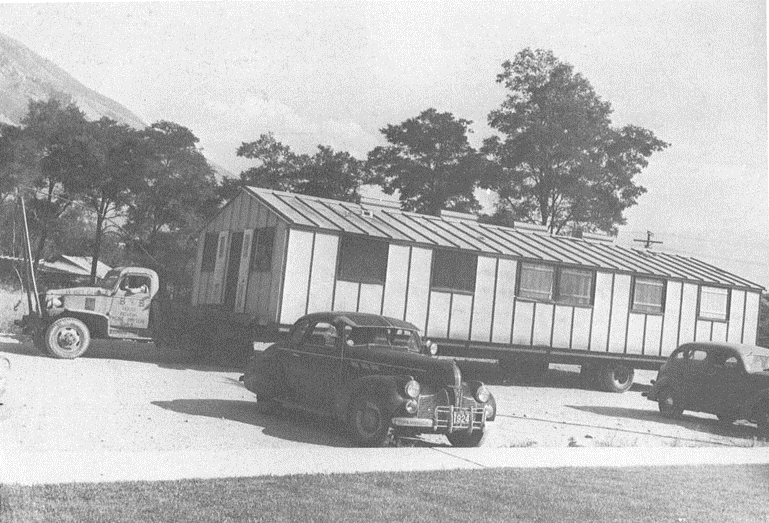
In 1946, BYU obtained forty-eight war surplus buildings which were moved from the Ogden Arsenal. They were called Butler Huts, and they were used intensively until they were removed in 1962–63 to provide for campus expansion and improved housing. The first home of the BYU Air Force ROTC unit also was in a Butler Hut, like the one in the photo.
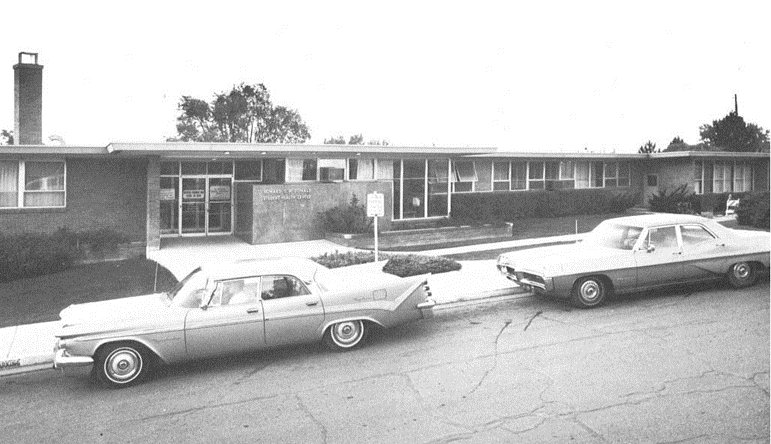
In May 1957, Air Force ROTC moved to the lower floor of the Howard S. McDonald Student Health Center, named for the fifth president of BYU.
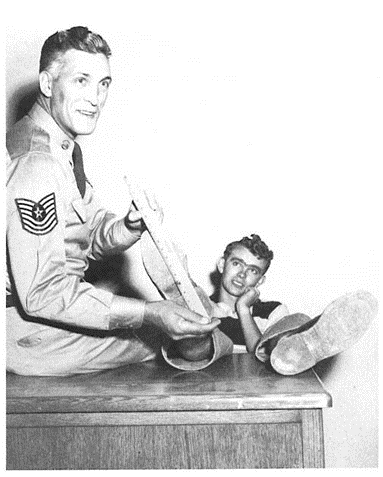
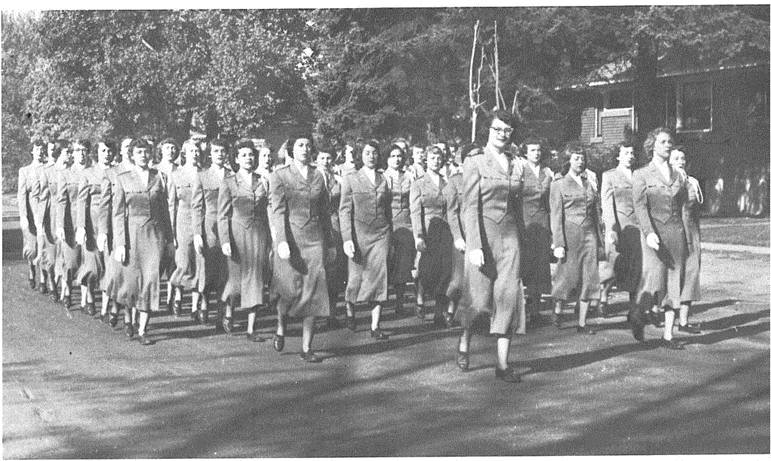
Shortly after the Air Force ROTC detachment was established, a women’s Sponsor Corps called Angel Flight was formed.
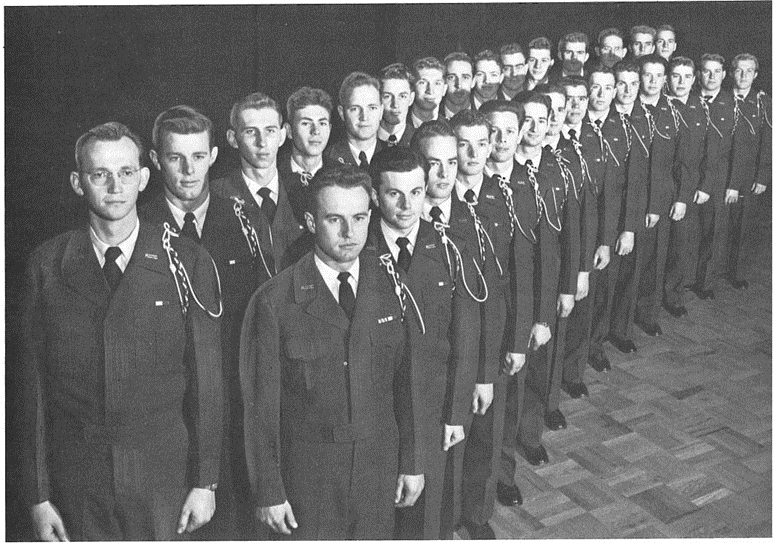
Soon after the establishment of the Air Force ROTC unit on campus, an ROTC male chorus was organized, later called the Footprints, made up of Air Force ROTC cadets and girls from the Angel Flight sponsor group. They perform musical and variety programs and often go on talent tours.
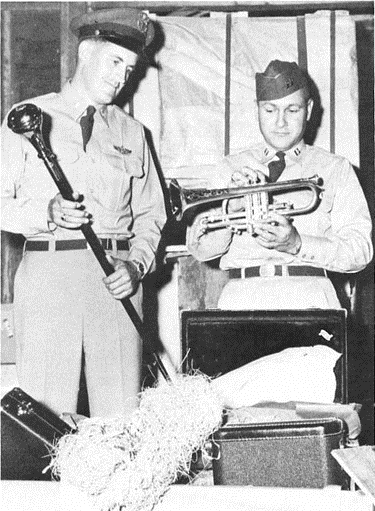
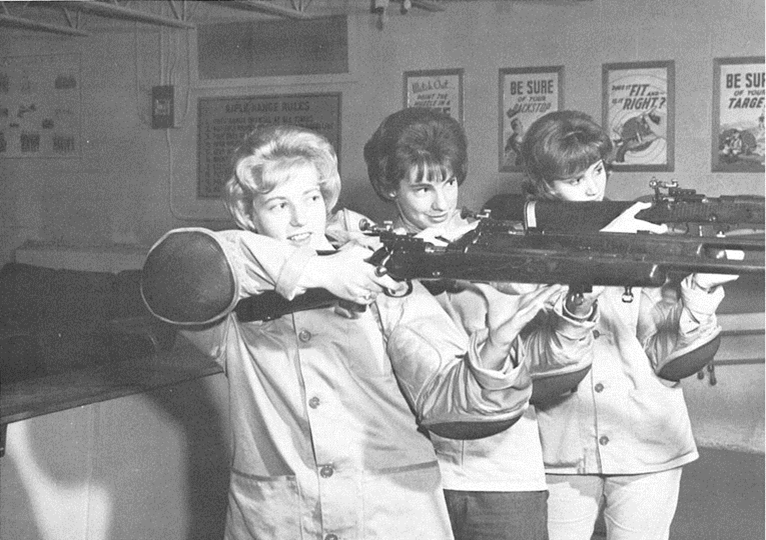
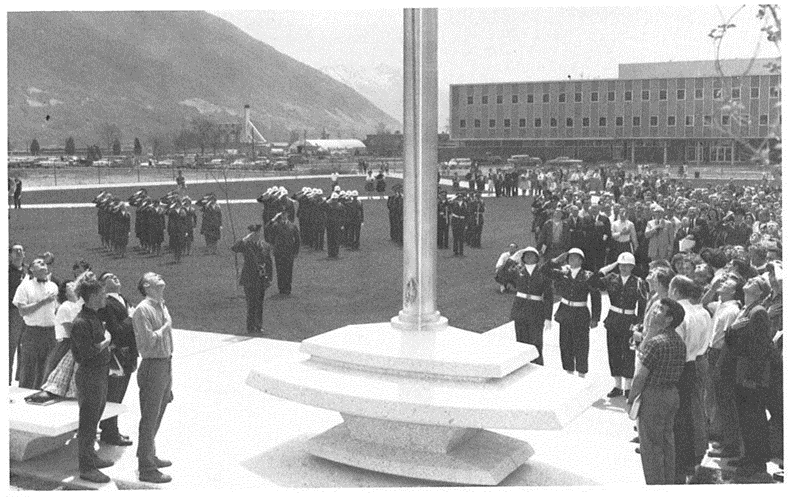
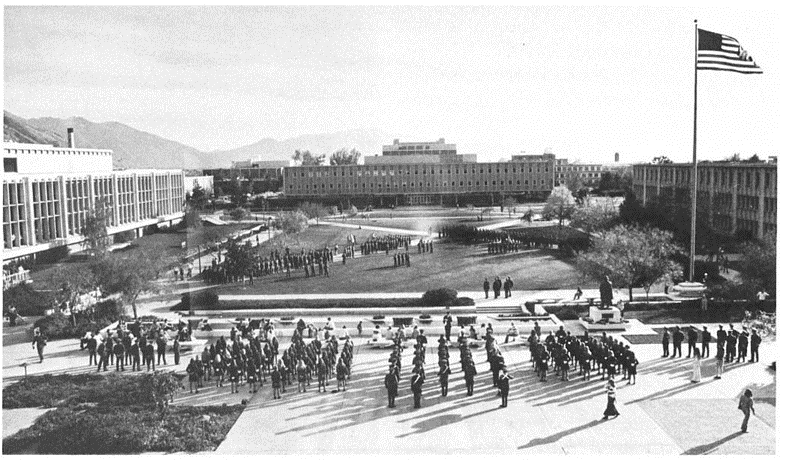
Since the 1961 opening of the Abraham O. Smoot Building, the raising of the American flag every morning and the lowering of it every evening by ROTC cadets have been a tradition at BYU.
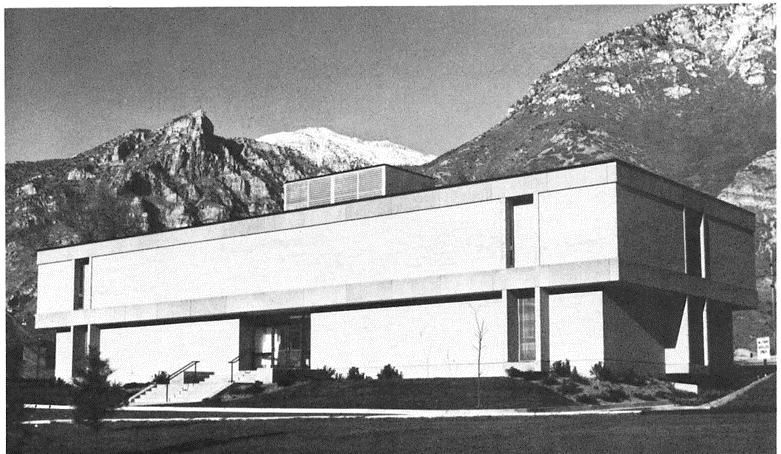
In 1968 BYU constructed the only school building in Utah designed exclusively for ROTC. The architectural firm of Young and Fowler Associates of Salt Lake City designed the structure, and the contract went to the Paulsen Construction Company. Although not a large structure—15,305 gross square feet, it is designed for enlargement as needed. The building cost less than $300,000. (Building Inventory and Space Recapitulation, BYU, Provo, Utah, as of September 1974,” unpublished report in Department of Physical Plant records)
The Daniel H. Wells Building, designed to house the Air Force and Army ROTC offices, was dedicated by Elder Boyd K. Packer on April 29, 1969. It was named in honor of the Mormon pioneer, soldier, civic leader, and counselor to Brigham Young. Wells was a member of the Board of Trustees of the University of the City of Nauvoo, a lieutenant general in the Nauvoo Legion, and commander of the militia in the Indian Wars from 1850 to 1867 and in the Echo Canyon War in 1857. He later became mayor of Salt Lake City.
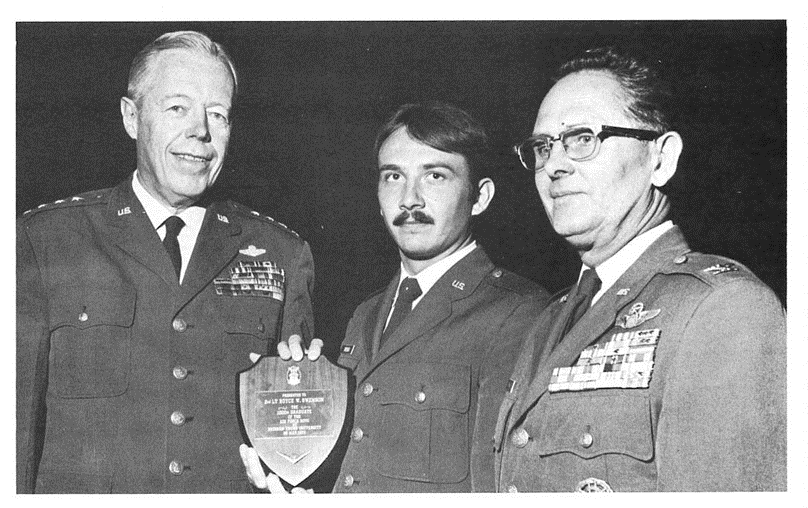
On May 26, 1972, Royce Swenson became the one thousandth cadet to be commissioned in the Air Force ROTC program at BYU. Presenting the plaque noting this event was General John C. Meyer, commander of the Strategic Air Command, who also administered the commissioning oath and spoke to the newly commissioned officers. Colonel Richard Baldwin, professor of aerospace studies at BYU at that time, directed the commissioning services. Lieutenant Swenson, a native of Pleasant Grove, Utah, happened to be in the right place on the alphabetical list of sixty graduates who were commissioned.
Source: BYU History—1000 Views of 100 years, by Edwin Butterworth, Jr.
